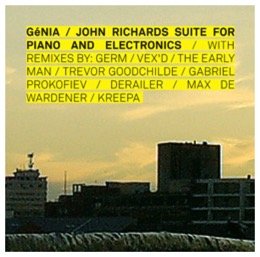Evolution (and life after death) for my String Quartet
08/05/10 12:48 Filed under: Personal
I’ve been working on this thing on and off for many months now - and I take heart in knowing that Maurice Ravel, whose Quartet in F major is an aspirational model for me with this project, himself took a long time too. Ariella commissioned it back in January 2009, I suspect they think I’ve forgotten about it completely.
The music is pretty much there, the hold up has been in the details - the attention to voice leading, the dynamics, the interior lines. After a spell of being all “Rah, time to get this bitch DONE and DUSTED”, throwing all my notes at the score with a 'that’ll do’ attitude, I’m now actually really enjoying giving it some careful attention. I think it deserves some, and I’m learning so much from the process. An hour spent inside the first movement getting a couple of cadences right, its fun .... not unlike sudoku.
Another aspect that I have been in two minds about has been the final format of the piece. Not wanting to shoehorn technology into it in a desperate bid to make the piece ‘modern’ or to fit in with my PhD research, but at the same time wanting to use the material for experimentation in some way without diminishing the musicality and appeal of the finished work. Then I hit on the solution - recycling! The score that becomes a performance that becomes a recording, and then a recording that becomes fodder for manipulation and restructuring (chopping, splicing, juxtaposing, sampling) that then becomes something completely new.

Then there’s my beloved Aphex Twin and his 26 remixes for cash in which, along with many weird and wonderful things, he gives us a re-imagining of Gavin Bryars’ ‘Sinking of the Titanic’ (he calls it “Raising the Titanic” ) and an eerie mash-up of Philip Glass’ Heroes symphony with the original David Bowie acapella vocal take from 1977. I have always regarded this guy to be a serious composer of new music - I defy anyone who’s actually listened to “drukQs” and his “Selected Ambient Works” to tell me I’m wrong.

I was talking to Rob (my PhD supervisor) recently about the chamber ensemble “Alarm Will Sound’, a group that somehow has the audacious bollocks to attempt to play Aphex Twin’s music live with real instruments. Something people thought was impossible, but they did it! With kettle drums and bassoons! What strikes you when you hear their renditions is how rare the music sounds - no-one would ever compose this stuff from a score, putting notes on a page. It’s a completely different way of composition - made possible by technology - where timbre and texture are king.
In Daniel Levetin’s awesome book “Your Brain on Music”, he reminds us that distinguishing timbre is one of the most sophisticated and important parts of our hearing:
... it is the most important and ecologically relevant feature of auditory events. The timbre of a sound is the principal feature that distinguishes the growl of a lion from the purr of a cat, the crack of thunder from the crash of ocean waves, the voice of a friend from that of a bill collector one is trying to dodge. Timbral discrimination is so acute in humans that most of us can recognize hundreds of different voices. We can even tell whether someone close to us - our mother, our spouse - is happy or sad, healthy or coming down with a cold. ... I believe timbre is at the centre of our appreciation of music”
Traditionally, this aspect was a bit of an unknown to composers who wrote scores. Even though most of us expect violins to have certain timbral qualities, the small differences in sound brought about by various instrument builds, performance idiosyncrasies, effects of spaces on ambience & standing waves, tunings etc are impossible to know. When material is recorded however, then these aspects are known from the outset and very much in the composers control.
I think people are really tuned in to the qualities of sound these days - there’s much talk about the timbral qualities of valve/analogue equipment, the superior listening experience provided by phonograph records or digital audio (depending which side of the fence you sit on) or whatever bit compression your mp3 happens to be to what dithering algorithm you bounce your masters with. Even people who aren’t musicians will comment on a “fat” bass line, a ‘dirty’ synth, a ‘heavy’ guitar part. Beethoven sounds better when played on a Bösendorfer than through a General MIDI module. I’m told that Haydn sounds perfect in the Esterhazy hall.
But back to the quartet... this is where I’m at with it right now - finishing the score, giving my attention to perfecting form, harmony, melodic themes, and all the other details. Once that is done, I eagerly anticipate hearing how Ariella play it, and recording the performance. Then to take that recorded performance apart and build something new with it.
*******************
UPDATE:
Is it wrong that Sibleius' 'REPRISE' music font on my music gives me the horn? (click --->1 score (08-05-10))